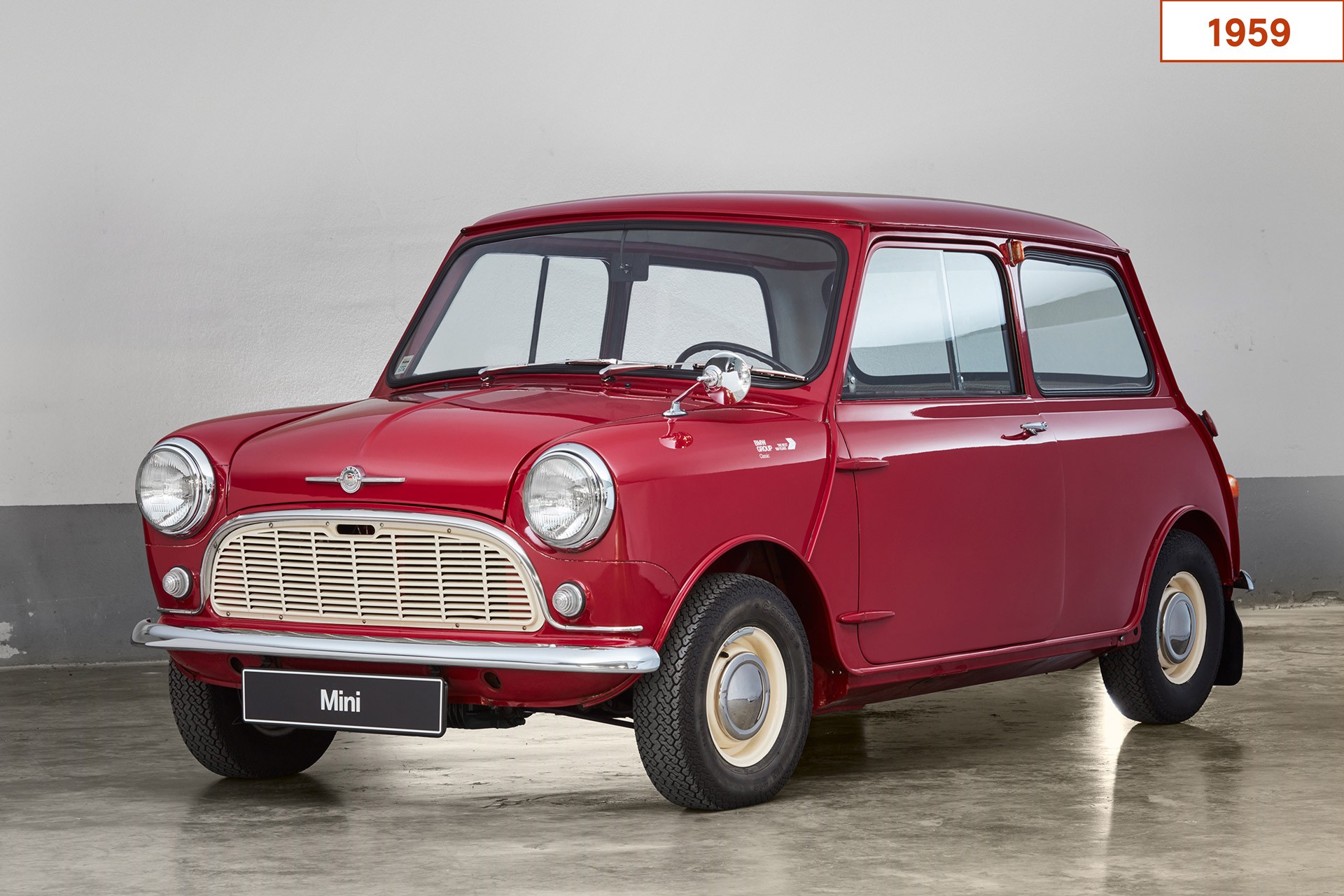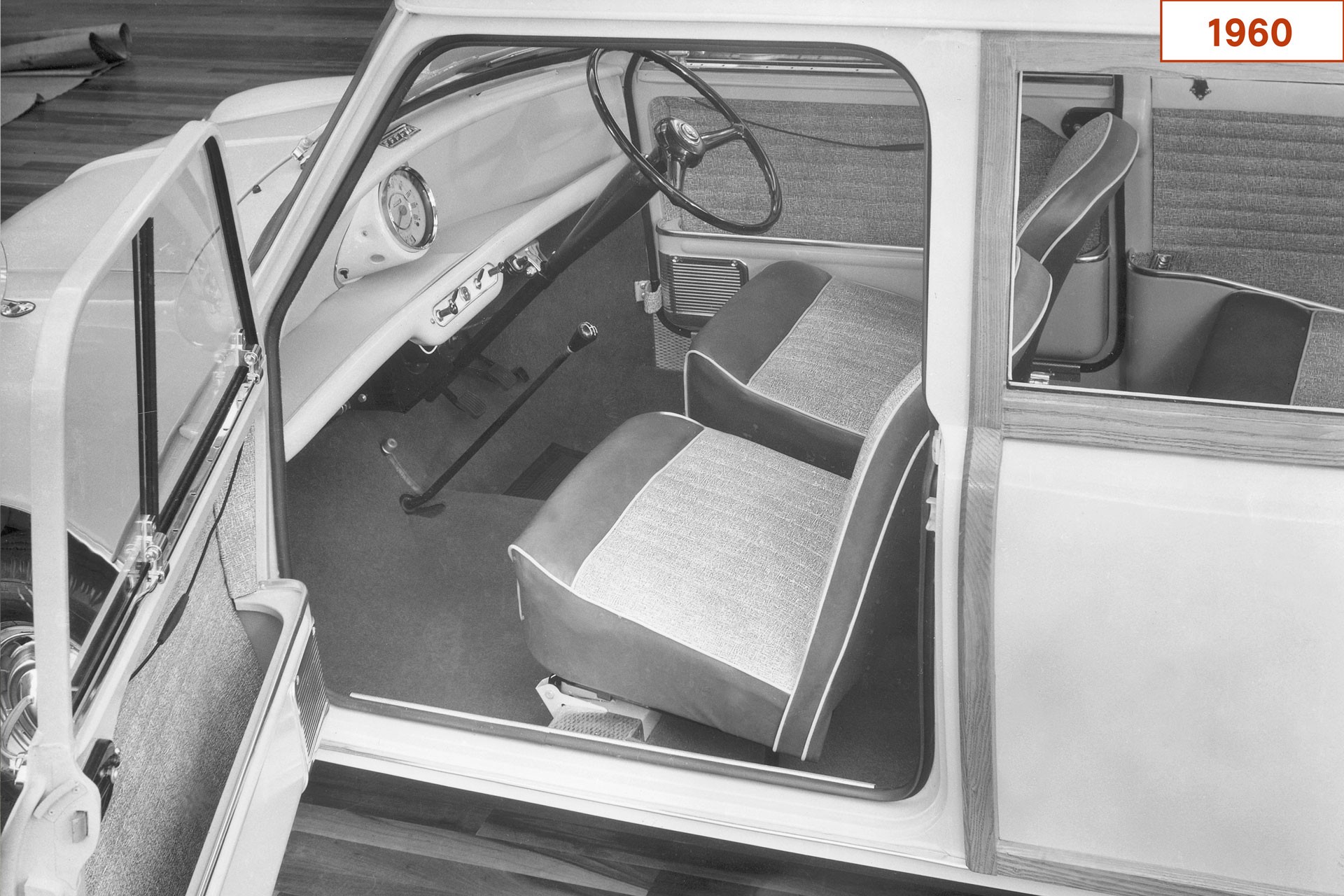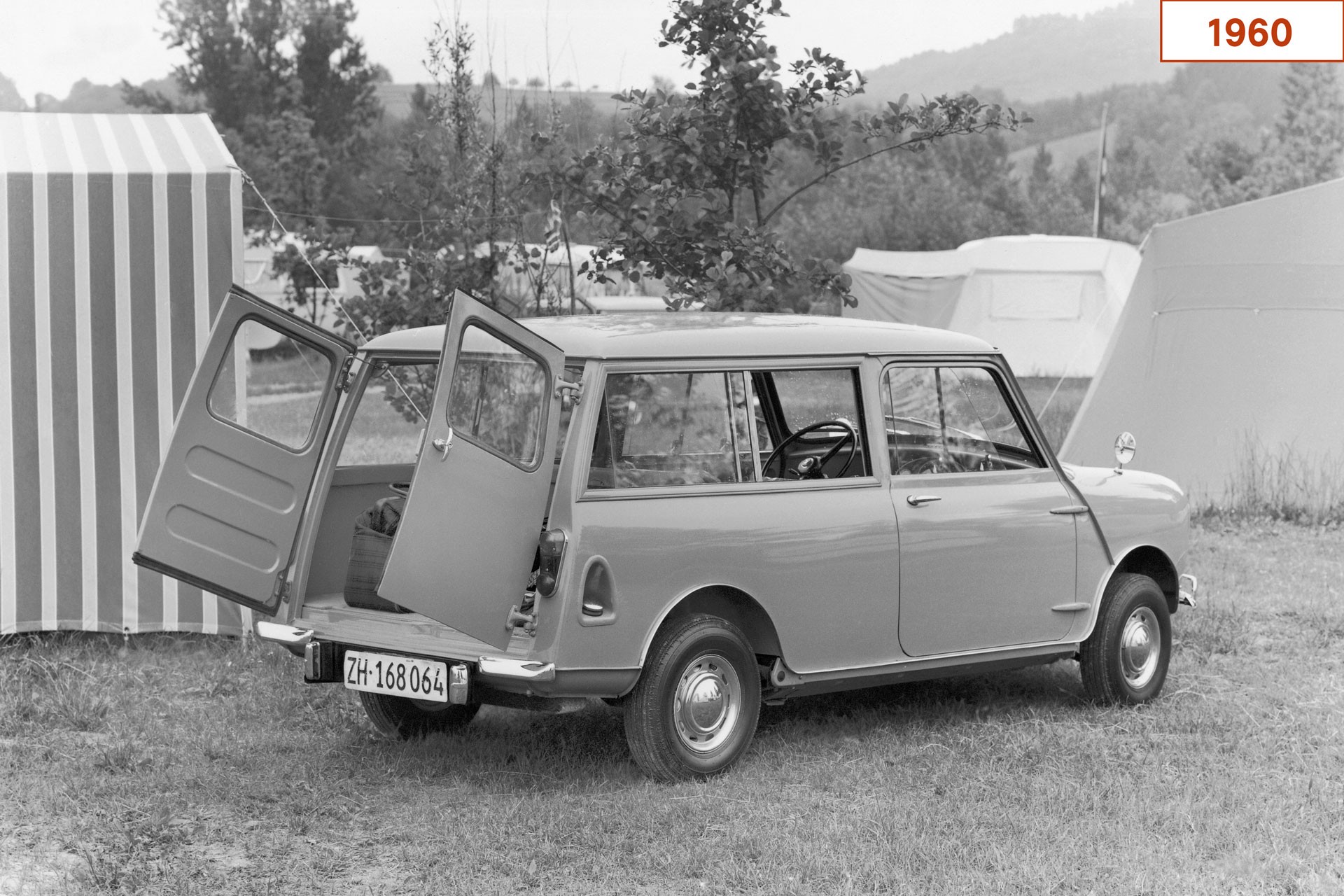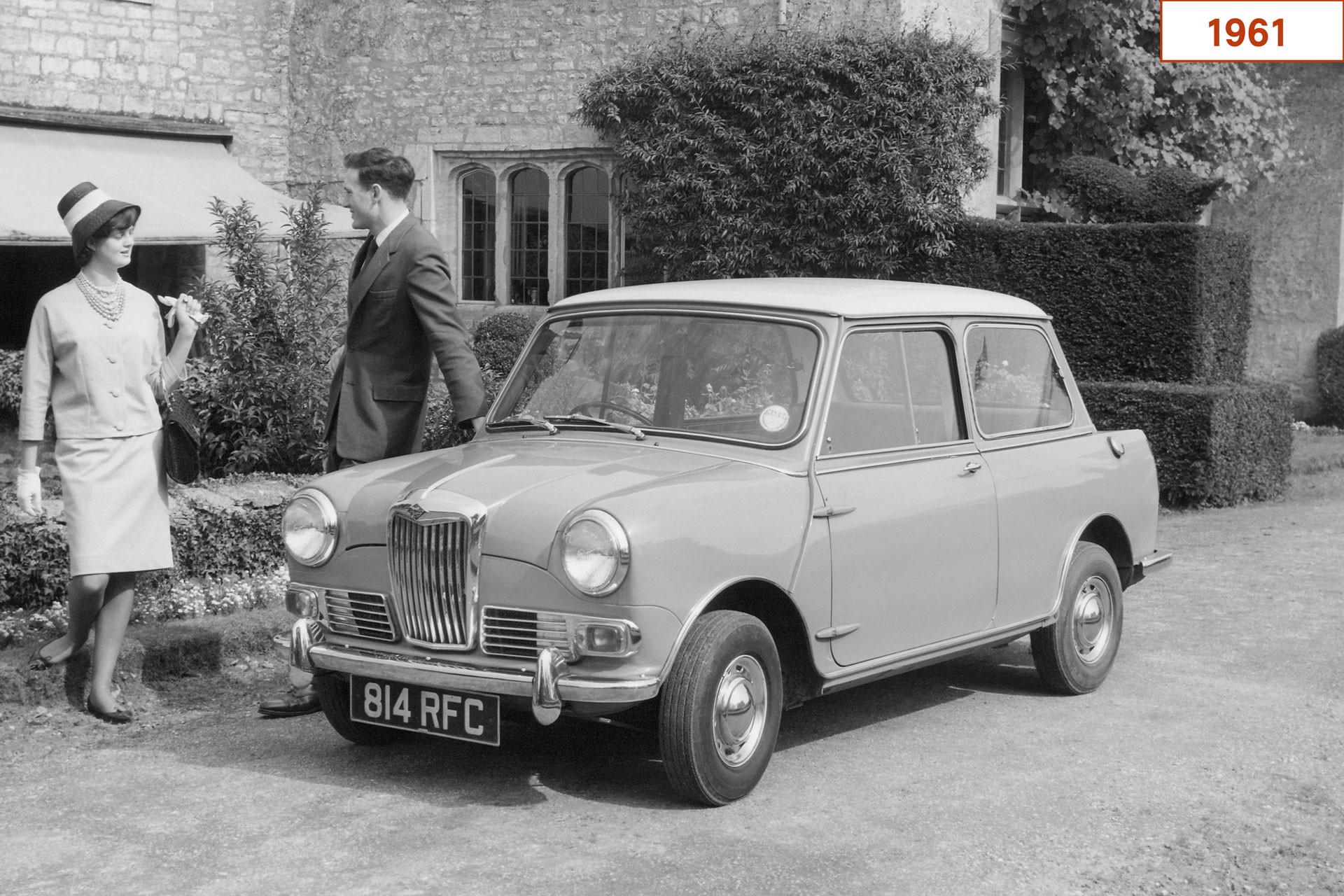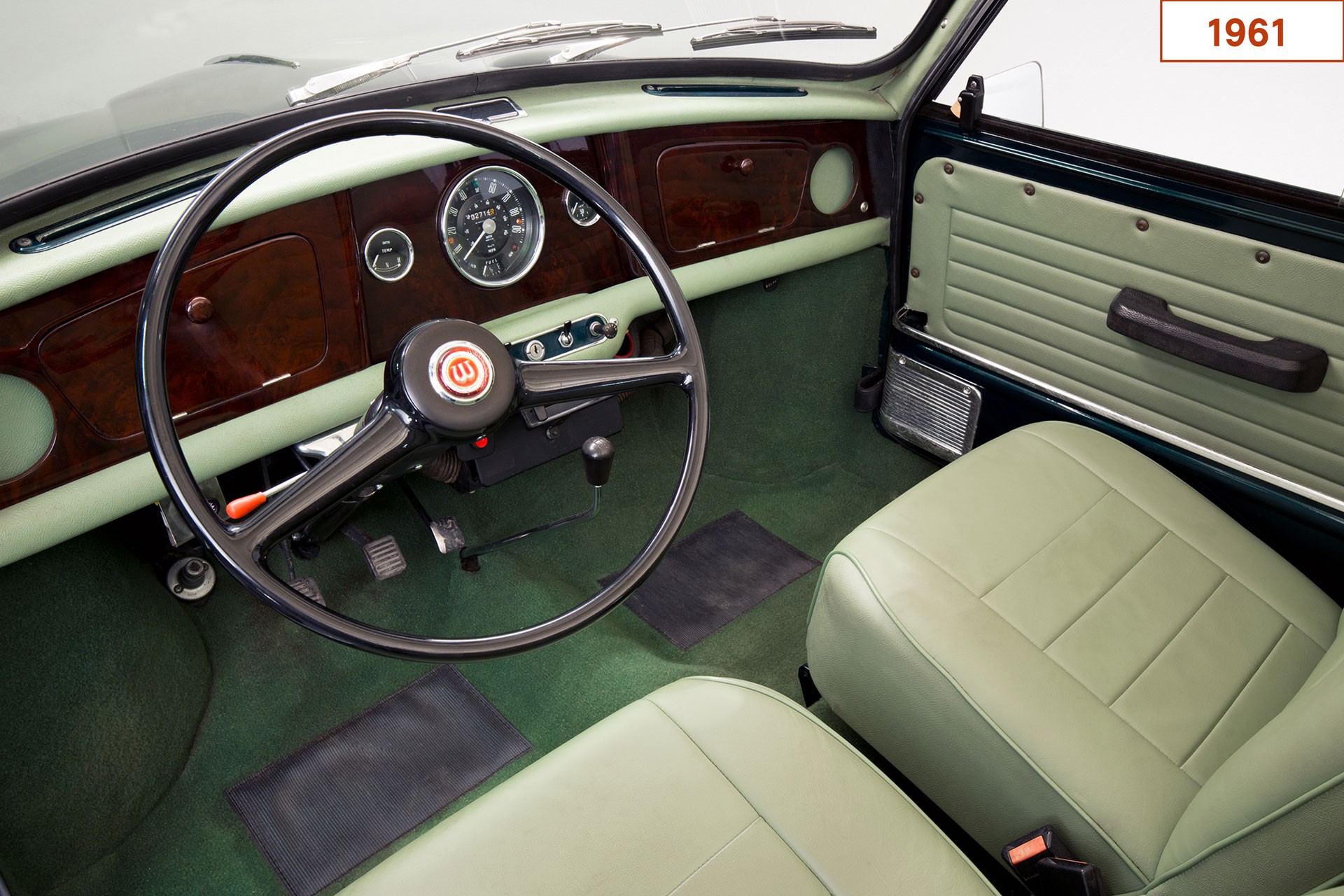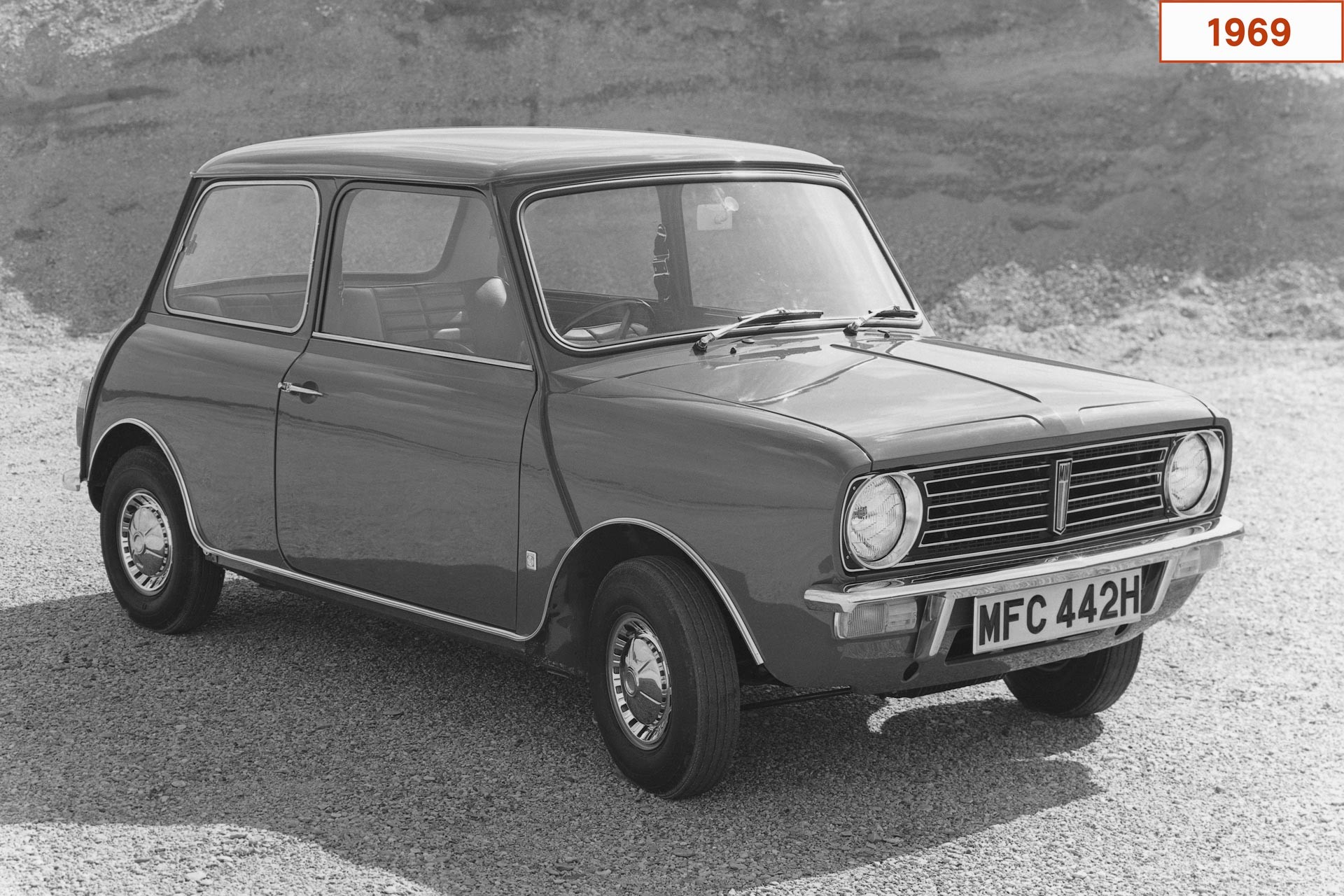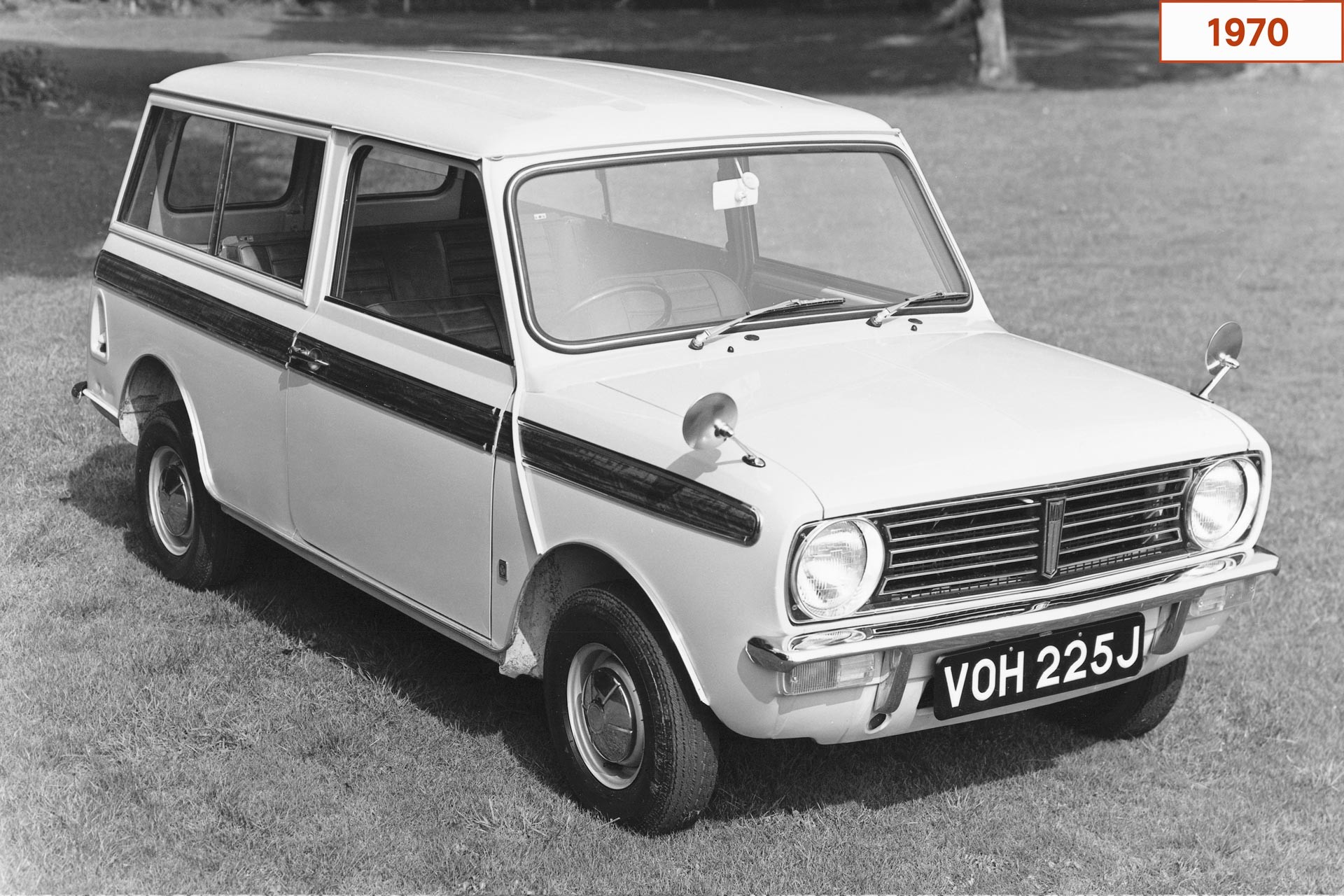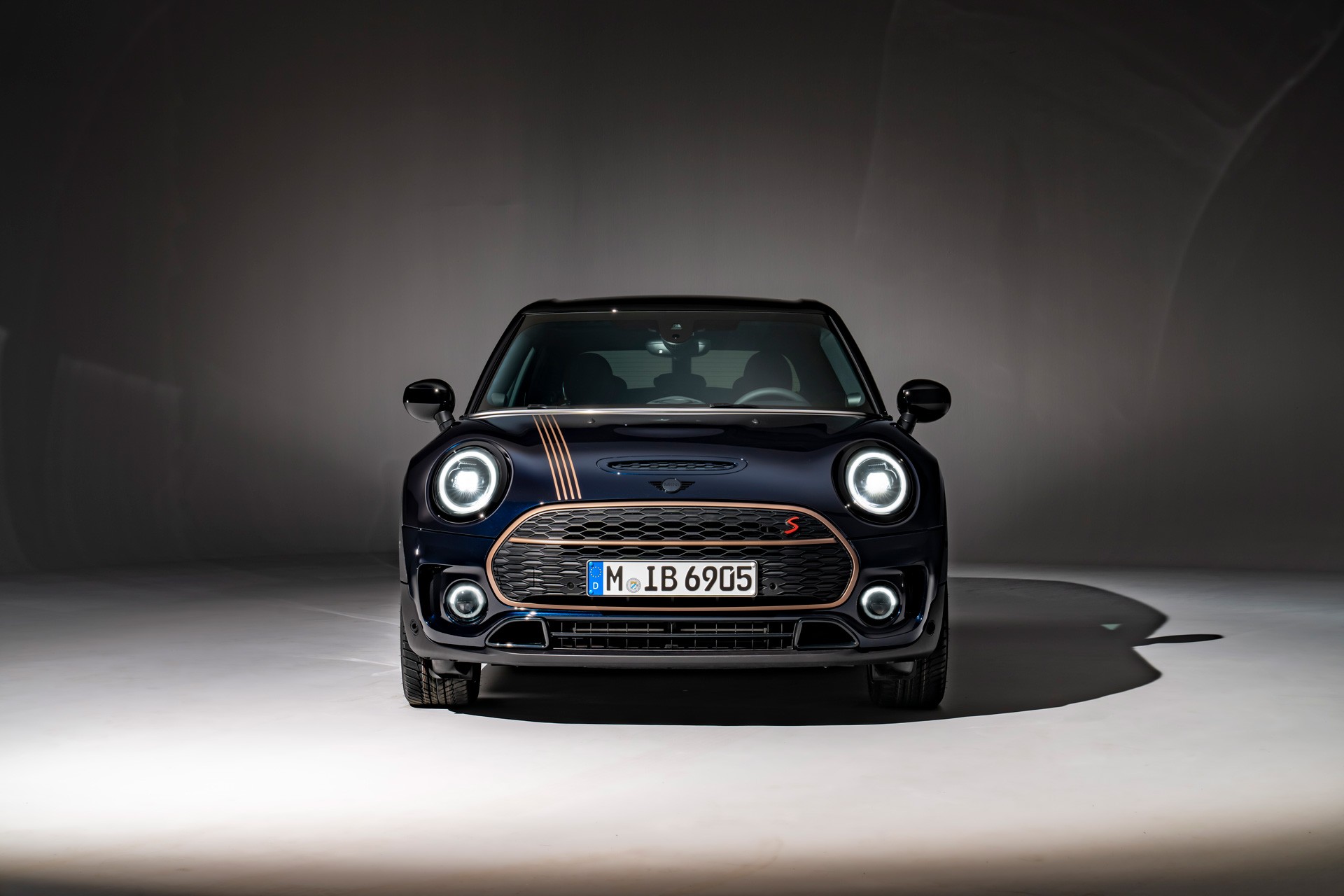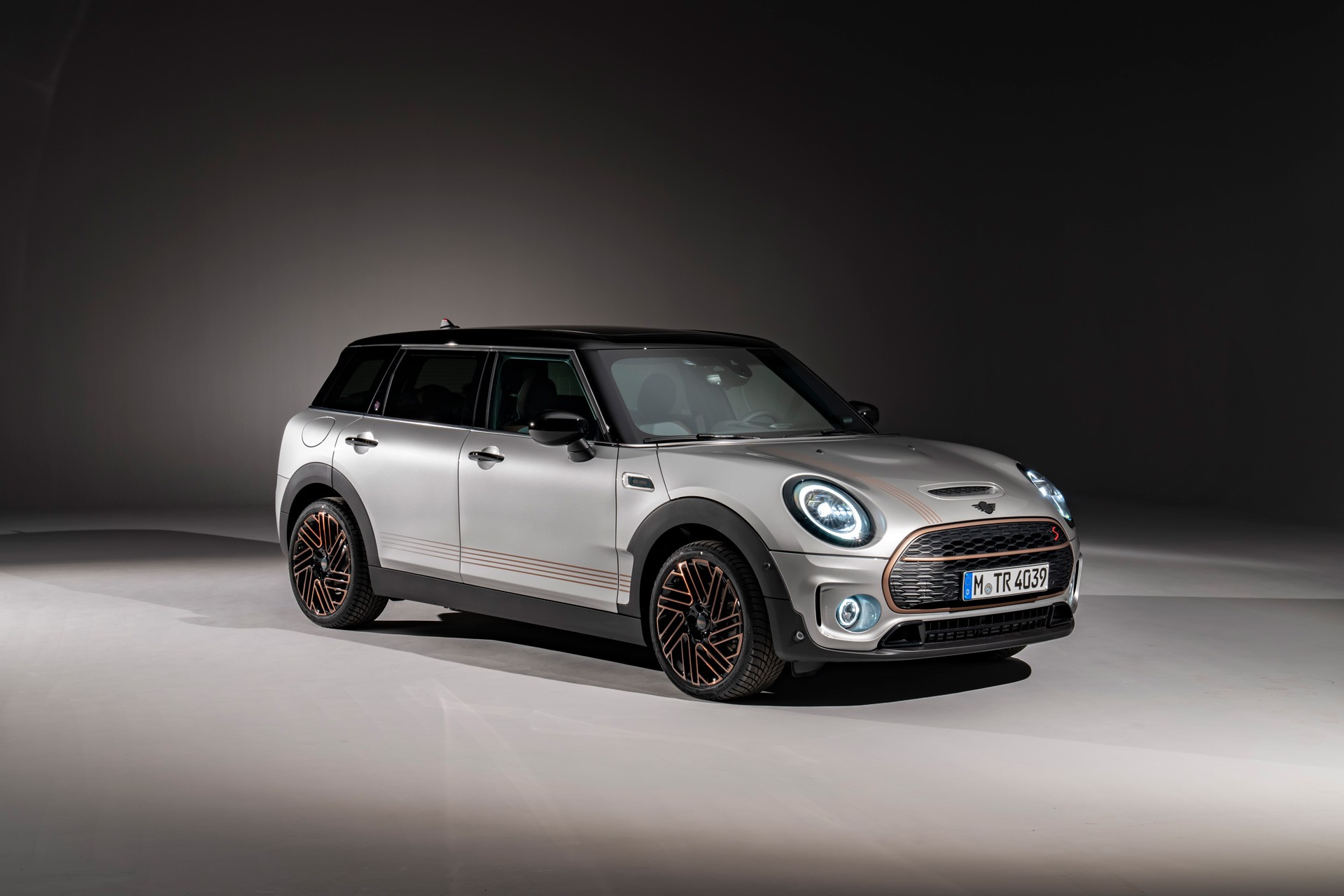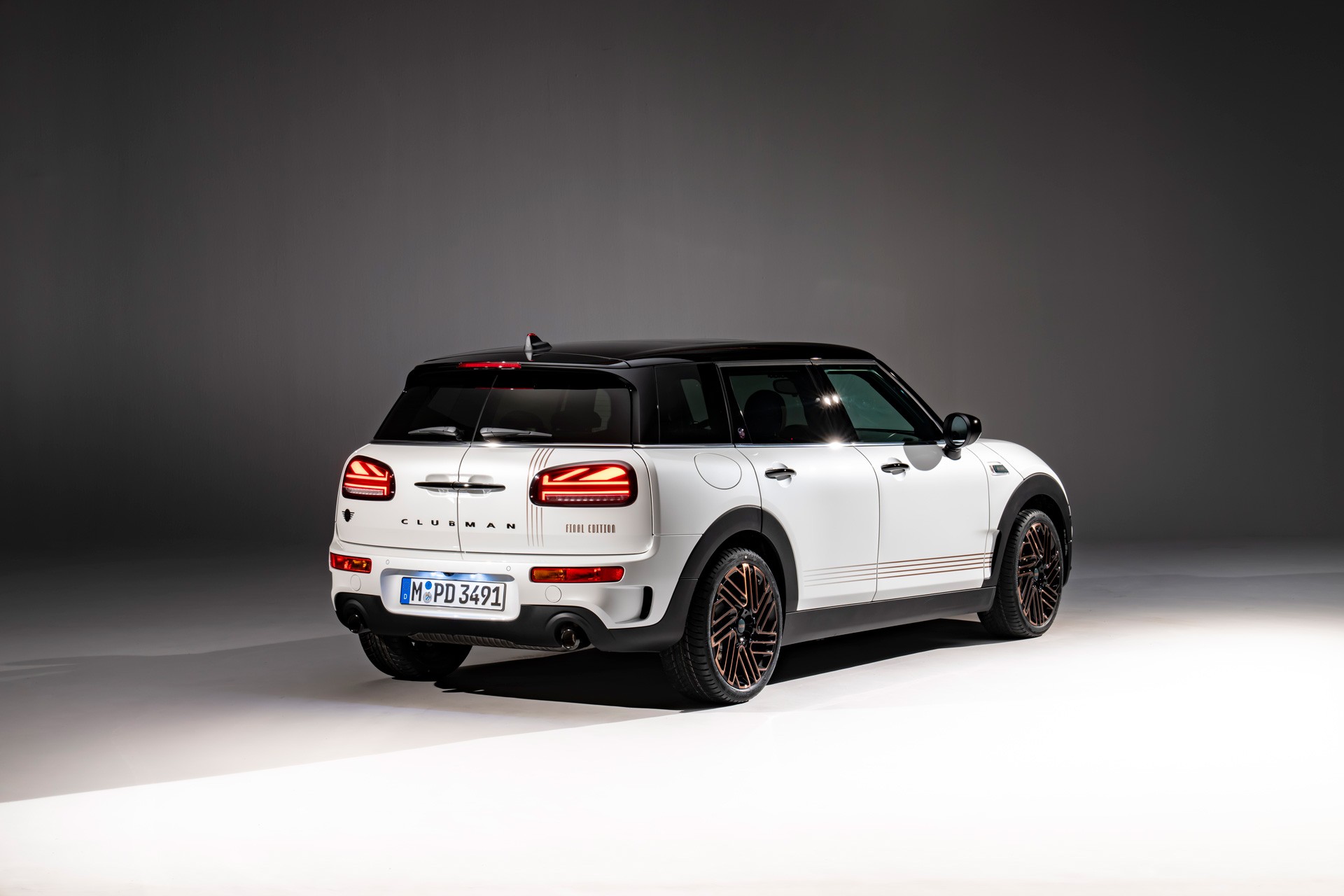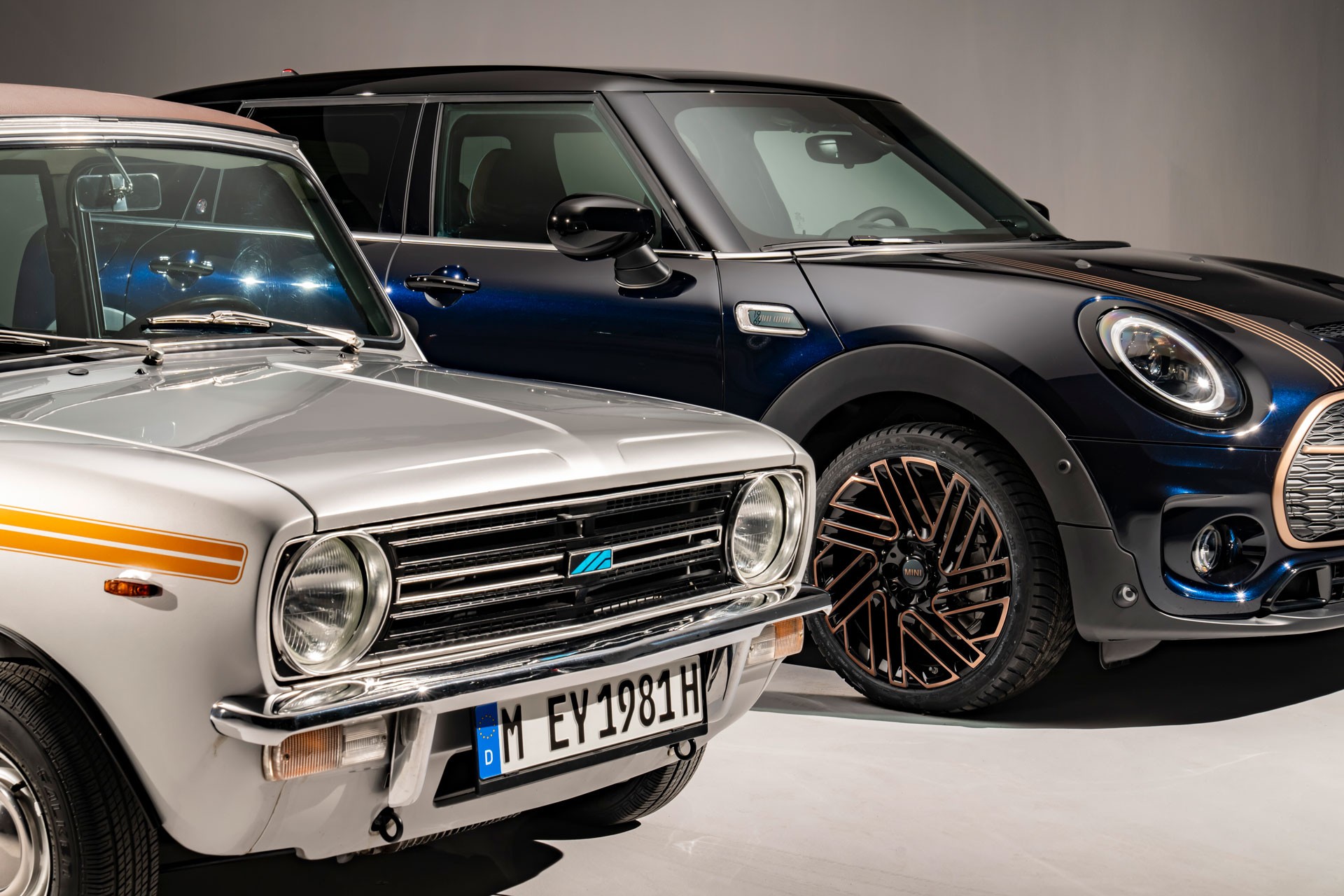Our tool for managing your permission to our use of cookies is temporarily offline. Therefore some functionality is missing.
HERITAGE.

A swing and a hit: the Mini Clubman.
Everyone knows the MINI Clubman. Introduced in 2007 as the third variant of the relaunched MINI, it has become known and loved for many things, most notably its unique split rear doors. But this wasn’t the Clubman’s first appearance. Its debut actually came in 1969, when it was produced in multiple versions, one being the Clubman Estate. Back then it was intended to represent a new, more mature Mini. Did it succeed? It did and it didn’t. But that’s just one part of its exciting story. As this iteration of the MINI Clubman reaches the end of its cycle with the March 2023 release of the Final Edition, it seems a good time to look back at the often controversial car that first cemented the Clubman name.


The huge Mini family.
When the Mini first appeared in 1959, it was immediately obvious to most that it was uniquely suited to turn into a whole host of different automobiles. It almost instantly became a pick-up, while John Cooper also recognised its potential as a racing car. And then there were some exceptionally cool versions such as the Mini Ice Cream Van and the Mini Wildgoose.
There were also two – or four, depending on how you count them – variants that stand out when it comes to the Clubman and the Clubman Estate.
First there were the estate versions of the original Mini. Technically there were two of them, as at the time, there were two of almost all Minis. Mini was not yet its own brand: the first compact cars we think of as the original Mini were either badged as an Austin Seven (later Austin Mini) or a Morris Mini-Minor. This was because of its owner’s, the British Motor Corporation’s (BMC), policy for rebadging: selling essentially the same car under multiple names or brands. The main differentiator was the place of assembly, but they also had a different grille.



The other two cars leading up to the Clubman were the Riley Elf and the Wolseley Hornet. Appearing in 1961, they were the longer, luxurious, top-of-the-line versions of the Mini. With a more traditional three-boxed shape, the two two-door saloons were almost identical. They also had a couple of problems BMC wanted to solve.

A new coat of paint.
By the mid-sixties, the Riley Elf and the Wolseley Hornet looked dated. While BMC wasn’t planning on replacing the Mini itself, they wanted to give the wider Mini family a nice, contemporary facelift.
They decided to replace the Riley Elf and the Wolseley Hornet saloons with a single car that would become the Clubman. And since they were making a new model, they would create an estate version of it and use the new Clubman Estate to replace the Austin Countryman and the Morris Mini Traveller. The plan was also to considerably lower production costs, and although that was not achieved, one out of two isn’t bad.
BMC was specifically looking to replace its aging cars with single models. Why all the slimming down? Well, too much of a good thing can be a bad thing.
Wise words that were true for BMC. During the sixties, the company grew rapidly. It acquired Jaguar in 1966 to become British Motor Holdings (BMH) and would become even bigger in 1968 when it merged with Leyland Motors, Rover, and Alvis to become the British Leyland Motor Corporation (BLMC). In 1967, the company had more than 150 purchasable models, which was simply too many, not just from a production standpoint, but also because the company’s cars were constantly competing against each other.
The upcoming car that was to become the Clubman was thus meant to provide a facelift to the Mini family that would also streamline it.



1952
Founding of the British Motor Corporation.
1959
The first Mini(s).
1961
BMC takes over Jaguar Cars and the Pressed Steel Company. British Motor Holdings forms.
1969
BMH merges with the Leyland Motor Corporation, Rover and Alvis to form British Leyland Motor Corporation.
1970
Debut of the Mini Clubman.
On the nose.
To design the new Clubman in 1967, BMH hired Roy Haynes who had made a name for himself as a man with a keen eye for the contemporary. And he did this by giving the car a new and very distinct nose. It was 10 cm longer than the original Mini’s and more angular. Some loved it, some would never warm to it.
In the end, there were three production vehicles based on the Clubman. First was the saloon, which debuted in 1969, followed by the Estate a year later. There was also the sporty 1275 GT, which did not bear the Clubman name, but did share its nose. The 1275 GT would become something of a motorsport hero, a story we've told in greater detail before. While controversial at the time, the more angular design of the Clubman would become a prominent feature across BLMC’s line-up.



During its 10+ year career, there were almost six hundred thousand Mini Clubman models produced, as it became an important car in the brand’s history.

Party in the back.
While originally the Clubman Estate was the second variant after the Clubman saloon, many consider it to be the best version as the longer nose of the Clubman better suited the longer wheelbase of the Estate model.
It did away with its predecessor’s real – albeit only decorative – wooden frames and panels, replacing them with wood-mimicking adhesive plastic film. This was beloved by Americans at the time and probably helped keep costs down. It was also a controversial choice among some fans, and later models would lose this feature in favour of stick-on stripes. However, it did keep the barn-style doors, which were meant to keep loading and unloading as easy as possible.



The Clubman Estate would be manufactured until 1981, or technically until 1982 under the 1000HL Estate name. It received some minor upgrades during its life, such as a newer 45bhp 1098cc engine that replaced the original 38 bhp 998cc engine the Clubman inherited from the original Mini.

While it didn’t become a classic on the level of the original Mini (what car could, really?), it introduced some features that would be adopted by its more round-nosed sibling. Paul Hughes – who had arrived at the same as Paul Haynes – designed a new, more ergonomic instrument binnacle, which was positioned behind the wheel instead of the middle of the cockpit, like the original Mini. By 1980, the design would become standard across all Minis.

Rebirth.
In 2007, the MINI Clubman – the estate version – was resurrected after a more than 25-year-hiatus. Just like the original, it brought something new to the table. As you would expect from an estate, it had more legroom and a bigger boot. But the headline-stealer was the boot. We would all instantly think of its barn-door-style boot which allows for easy access and loading. But the resurrected Clubman also had a rear-hinged door, only on the passenger side, which added just a bit more to its personality.



It was only a matter of time before MINI tried its hand at a commercial vehicle based on the Clubman. The result was the MINI Clubvan, produced from 2012 until 2014. With no rear seats and metal panels in place of the rear windows, the Clubvan offered a larger and more rugged loading area with a removable separator cage.


This passenger-side door would not remain for the current iteration introduced in 2015. However, the current Clubman boasts a longer wheelbase, which enables the car to have four doors and a roomier interior. Additionally, it has a sleeker and less boxy appearance, a wider range of engine options, and a more advanced infotainment system. It remains a great true 5-seater for both individuals and families. For those who value speed, excitement, and practicality, the John Cooper Works version offers just that. As a MINI, there are many ways to customize the Clubman, from the usual stripes to the unique MINI roof designs, as well as multiple Special Editions such as the MINI Clubman Untold Edition, which debuted in 2022.
And now, a year later, we’ve arrived at the MINI Clubman Final Edition, a car that provides a proper send-off with exclusive features. The Final Edition provides the Clubman with a makeover that pays tribute to its heritage and imbues it with a premium look that has never been seen before. Check it out now, as only 1969 will be produced. A fitting farewell to the MINI Clubman. Until we meet again.


Historical photos: BMW Group Classic; Photos of Final Edition: MINI.
